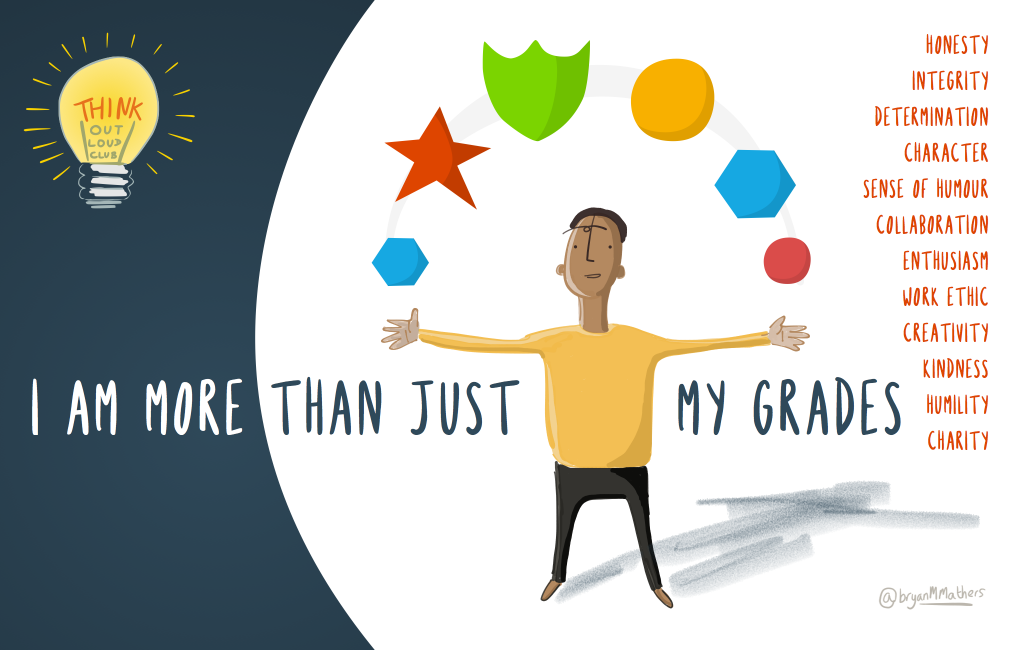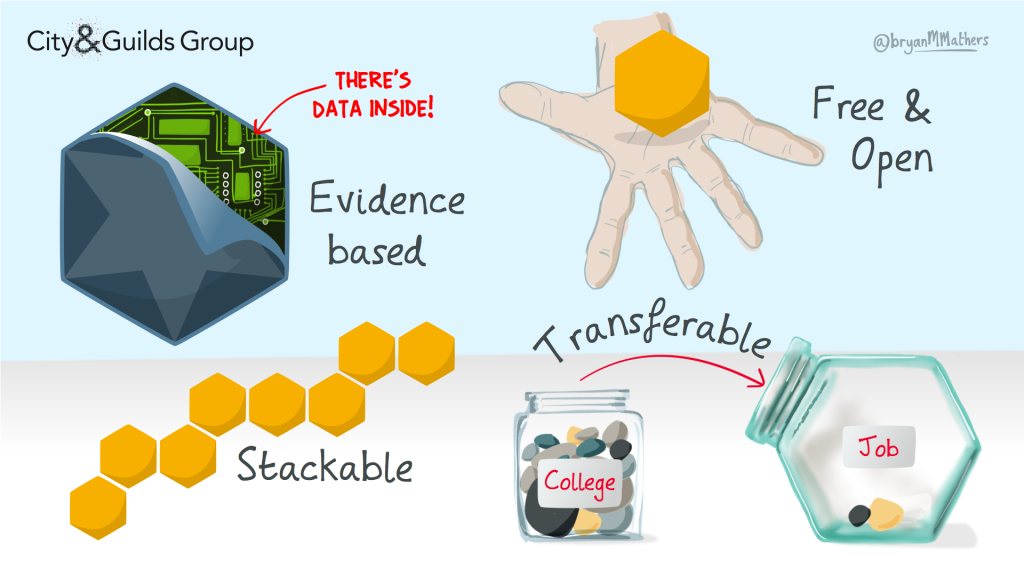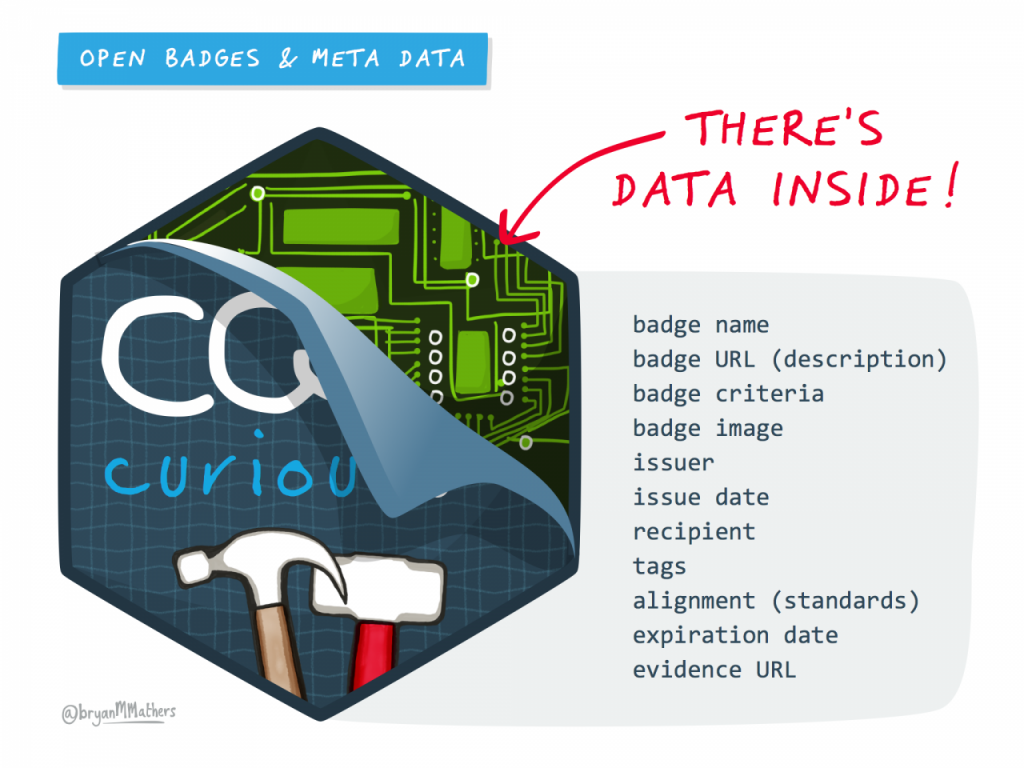What are Open Badges?
Open Badges are an online standard for recognising and verifying learning.
Traditional certificates can be issued for anything, and just like certificates, Open Badges can be used to credential different levels of knowledge, skills, and behaviours. Just as we’d issue a certificate in both a low-stakes situation and a high-stakes situation (but recognise that there’s a difference between the two) so we can issue badges in both situations. One advantage of using an Open Badge instead of or as well as a certificate is that badges have a built-in ‘breadcrumb trail’ of evidence. The audience can then immediately follow this trail if they have doubts about authenticity or rigour. This isn’t always immediately obvious or available with traditional paper certificates.
Individuals can earn badges for the things they learn, both online and offline, and then display them in Open Badge Passport or Backpack, or on their website or social media profiles. With Open Badges, every badge is full of information. Each one has important data built in that links back to the issuer, the criteria it was issued under and evidence verifying the credential.
Institutions and organisations can issue badges as recognition for the things they teach. Open Badges is not proprietary – it’s free software and an open technical standard. Open Badges are designed, built and backed by a broad community of contributors, including NASA, Disney, Intel, and many more. The open source model means that improvements made by one partner can benefit everyone, from bug fixes to new features.
Badge Wiki, a knowledge repository for Open Badges, is a useful starting point for anyone wanting to know more about Open Badges!
7 Things You Should Know About Digital Badges
Digital badges are validated indicators of skills or competencies, often representing the completion of a microcredential. Badges typically represent competencies not shown on a transcript, including learning from internships, volunteer work, and other co-curricular activities. Increasingly, badges conform to the Open Badges standard, and many are stackable, meaning that they can be credited toward an advanced badge, a certificate, or a degree.
7 Things You Should Know About Digital Badges [PDF]
The 7 Things You Should Know About... series from the EDUCAUSE Learning Initiative (ELI) provides concise information on emerging learning technologies. Each brief focuses on a single technology and describes what it is, where it is going, and why it matters to teaching and learning. Use these briefs for a no-jargon, quick overview of a topic and share them with time-pressed colleagues.
Badges in Moodle
Badges can be awarded either manually or using activity completion settings in a course and are a popular way to motivate students. Students may be awarded badges at different stages of the course for different levels of progress
Badges are a good way of celebrating achievement and showing progress. Badges may be awarded based on a variety of chosen criteria and are fully compatible with the Open Badges Standard. Badges created in Moodle may be displayed on a user's profile or pushed to an Open Badges backpack and public badge collections in their backpack will display in their Moodle profile.
- Moodle: Tracking Progress
- Moodle: Badges
- Moodle: Managing Badges
- Moodle: Badge Settings
- Moodle: Using Badges
- Moodle: Badges FAQ
Open Badge Passport
Open Badge Passport is a free, easy to use service, where you can receive and store your Open Badges safely and share them with whomever you like and wherever you like.
With Open Badge Passport students can easily receive, save and organise their Open Badges, and share them on social media such as LinkedIn, Twitter and Facebook (as well as display them in a Mahara eportfolio). Students can showcase their achievements and build a versatile and interesting gallery of skills and know-how with Open Badge Passport!
What is the difference between Digital Badges & Open Badges?
A digital badge is an online representation of a skill you’ve earned. Open Badges take that concept one step further, and allows you to verify your skills, interests and achievements through credible organisations and attaches that information to the badge image file, hard-coding the metadata for future access and review. Because the system is based on an open standard, earners can combine multiple badges from different issuers to tell the complete story of their achievements — both online and off. Badges can be displayed wherever earners want them on the web, and share them for employment, education or lifelong learning.
Society has used physical badges for years to display various achievements — whether it’s for sporting achievement or via an organisation such as the Scouting movement. Digital badges are as old as the web, showing status within online communities. Anyone who’s used an online forum has seen this in action through the various privileges unlocked through the number of posts members make (or upvotes they receive).
While digital badges can be an extremely effective way to ‘gamify’ user experience, they lack transferability. Users wanting to display their Treehouse, Khan Academy, and Foursquare badges together in one place would have to copy and paste the images. Given that anyone could do this, without an audit trail, there is an issue around trust and verifiability.
Open Badges take digital badges one step further. They are more suitable to be used as credentials as they have information about the learning experience baked in. Open Badges can be validated by anyone wanting to check up on an individual’s claim to knowledge or skills.
Unlike digital badges, users can take their Open Badges can display them anywhere across the web. Open Badges are portable credentials. This works in a similar way to videos from YouTube being embedded on blogs, wikis, and other websites. Collections of badges — which may feature some from two or more different organisations — can be displayed in a way that makes sense to the user.
There are several important differences between digital badges and Open Badges:
- Open Badges are not controlled by any one organisation. The technology that underpins the whole system (the Open Badges Infrastructure, or OBI) is a free, open-source and run for the world wide community.
- Open Badges are evidence-based. The information about who, why, and for what the badge was issued is hard-coded into it as metadata.
- Open Badges are stackable. Badges from one organisation’s system can build upon ones from another system. This creates a rich ecosystem that individuals can use to build the story of their skills, knowledge, and experience.
- Open Badges are transferable. Badges earned in one environment can be shared in another. Although Mozilla’s badge backpack is often used as the default place to send badges, they can be stored anywhere — including on your own computer, if you prefer.
- Open Badges put the user in control. Badges are private until they are published by the user. They provide an easy way to show a portfolio of skills without third parties having to wade through a mountain of data.
What Are Open Badges?. (2018, April 5). Badge Wiki. Retrieved 08:48, August 7, 2019 from https://badge.wiki/w/index.php?title=What_Are_Open_Badges%3F&oldid=8542.



